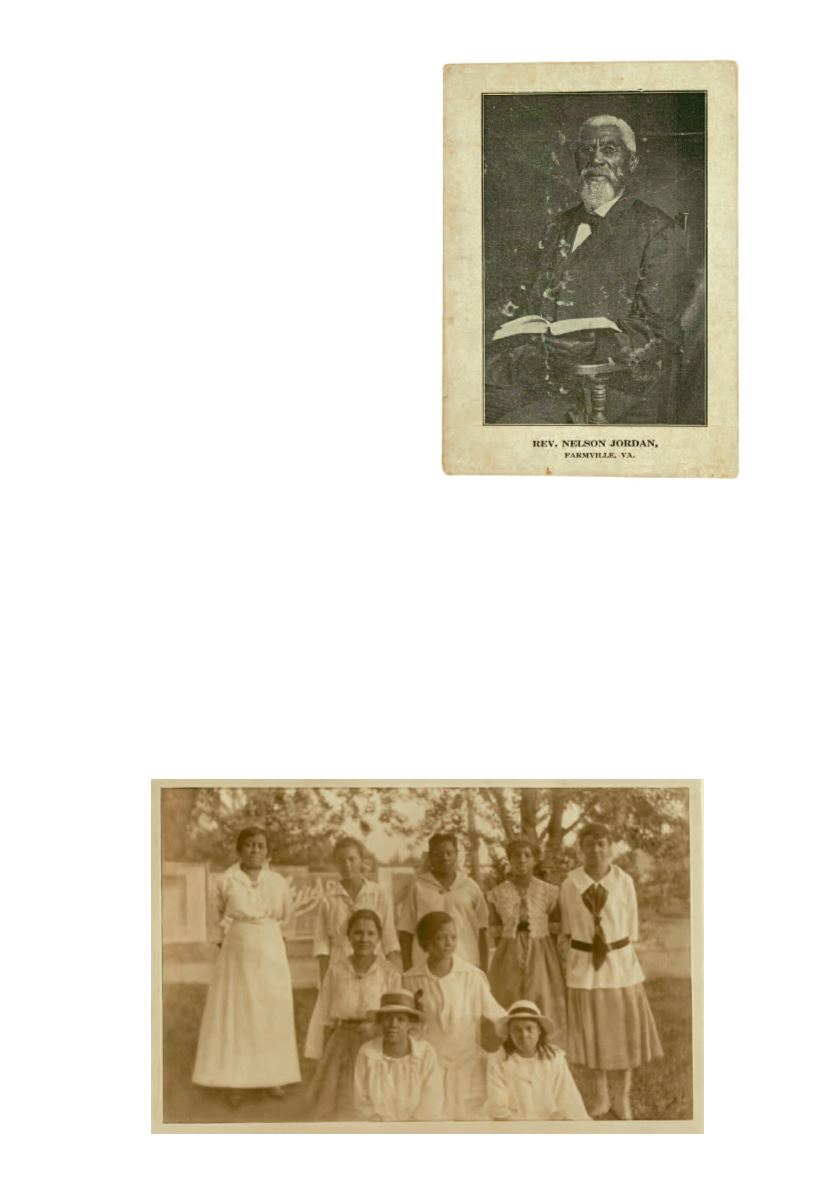

Spanning roughly 150 years, it includes tintype
photographs of the patriarch and matriarch of the
family, Baptist minister Nelson W. Jordan (1842-
1922) and Catherine “Carrie” Spencer Jordan
(1862-1945). Nelson served in Company D of
the 55th Massachusetts Volunteers. After the war
he was ordained and pastored in four rural
churches. Nelson and Carrie were married in
1879, and had 10 children, nine of whom sur-
vived. Included is the enormous family Bible,
recording the births and deaths of the Jordan fam-
ily. They had five daughters: Julia, Delphie
Mozella (“Aunt Zell”), Anna Viola, Elsie May
and Elizabeth Hayes and four sons: Nelson R.,
Walker Harrison, Arthur Edward and Joseph
Delaware, all of whom distinguished themselves in
education, the church, and military service. The
archive is rich in photography, beginning with pho-
tographs of Nelson W. Jordan and Carrie Spencer
Jordan, ex-slaves. There are numerous photographs
of all of the children and their children. Julia
(1881-1942) married Henry Womack, and there
is a rich correspondence from Henry to Julia.
Delphie Mozella married Reverend Peter Price and built and maintained an educational summer
camp for children, “Camp Winona.” Anna Viola married Otis Turner; they had a daughter Ruth
whose wonderful high school and college scrap books include a great deal of music related ephemera.
Nelson R. (“little Rev”) married Olga, and like his father became a minister. Walker Harrison served
in WWI and wrote an exceptional account of race in the service, titled “With Old ‘Eph’ in the
Army, a Simple Treatise on the Human side of the Colored Soldier” (Baltimore, 1919). Arthur
Edward married and had children, as did Elsie May and Elizabeth Hayes. The accomplishments of
the Jordan family are recorded visually as well as in documents, including an early Howard University
diploma. Present too is Nelson R. (“Little Rev”) Jordan’s “Red Line Bible,” with his copious notes
for sermons interspersed throughout. This archive represents a partial record of a family that excelled
through the limited avenues that were open to African Americans following Reconstruction and the
onset of the Jim Crow era. Unlike so many black families, the Jordans for the most part did not
become swept up in the Great Migration, and instead remained in Virginia.









